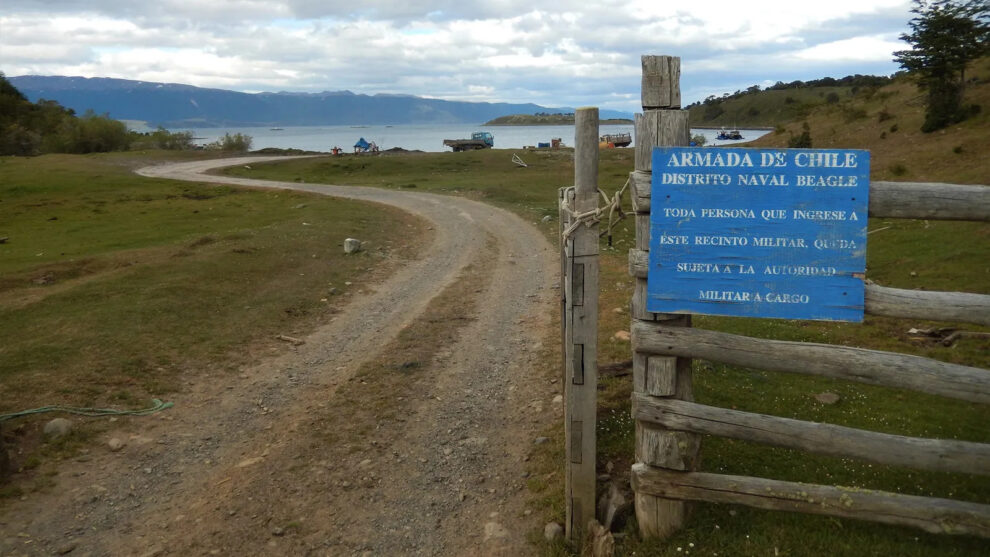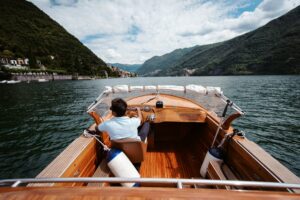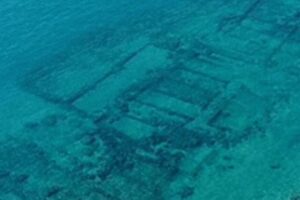Barely 1,000km north of Antarctica and home to just two people, Caleta Eugenia in Chile is the southernmost point to which you can drive on the planet.
As I reached Caleta Eugenia, the gravel road disintegrated into a stony track that beat a sinuous route through a patch of grass strewn with aged trucks and abandoned farming equipment before petering out at a pebble beach curled like a comma along the shore of the Beagle Channel.
There was no one to greet me as we parked up, but a shaggy border collie bounded over excitedly from a dilapidated homestead whose corrugated iron roof rattled violently in Tierra del Fuego’s notoriously fierce winds. Three fishing boats bobbed offshore, their search for lucrative king crabs – which can measure 1.5m or more from tip to tip – delayed by a brewing storm just south in the Drake Passage. Barely 1,000km north of Antarctica, my gloved fingers numb from the late afternoon chill, I’d reached the end of the road – literally. A lonely ranch owned by the Chilean Navy, Caleta Eugenia is the most southerly place you can drive to on Earth.
My road trip started 23km west in Puerto Williams, a 2,000-person settlement in the shadow of the mighty Dientes de Navarino, a range of fang-like Andean peaks, their flanks streaked with snow. Founded as a naval base in the 1950s, Puerto Williams is situated on Isla Navarino in southern Tierra del Fuego, a sparsely populated archipelago divided between Chile and Argentina and lying to the south of Patagonia, across the Strait of Magellan. The small port is more than 2,400km south of the Chilean capital, Santiago – roughly the same distance as between London and Istanbul.
In a canny bid to boost tourism, the Chilean government upgraded Puerto Williams’s status from a town in 2019, allowing it to snatch the title of the world’s southernmost city from its far-larger Argentine rival Ushuaia, which sits on the opposite side of the Beagle Channel. Despite its new billing, the capital of Chile’s Antarctic province looks and feels like a small town – residents leave their doors unlocked and horses and cows roam the quiet streets. It has no road connections with Chilean Patagonia and is only accessible by boat or plane, which is part of the attraction for the few travellers who venture this far south.

“This is a special place, somewhere you can really feel the isolation,” said writer Perla Bolla, owner of Jardín Fuegia, an immaculate shop near the dock selling plants, books, prints and jars of homemade rhubarb-and-ginger jam. “You can walk for miles and miles and not see anyone.”
This is a special place, somewhere you can really feel the isolation. You can walk for miles and miles and not see anyone
Yet despite its remoteness, Puerto Williams is developing fast: a modern dock is being built to allow larger Antarctic cruise ships to call in and a major socio-ecological research centre has recently opened.
After spending a couple of days exploring Puerto Williams, hiking to a mountain viewpoint and eating hearty king crab gratin, I found the ideal person to take me to Caleta Eugenia, a journey that provides a fascinating insight into the tumultuous history of this far-flung region. Over breakfast, I discovered that the owner of my guesthouse, Maurice Van de Maele, was also an anthropologist, polar guide, former director of the city’s museum and head of the local tourism association.
On the final afternoon of my three-day visit, he drove me east along the Y-905, passing a neighbourhood of identikit naval houses with white picket fences, a jumble of mismatched one- and two-storey civilian homes, a weather-beaten A-frame church and a handful of simple shops and restaurants. A sign in a guesthouse garden announced: “You’re at the end of the world”.
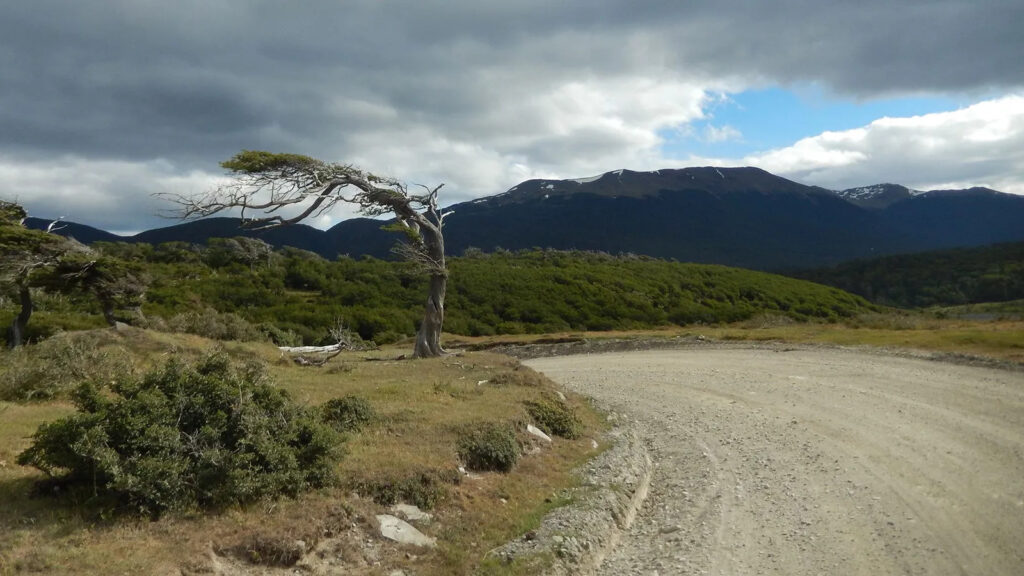
The paved road ran out on the outskirts, near the hamlet of Villa Ukika, which is home to around 50 Indigenous Yagán residents. Their ancestors lived in nomadic, canoe-based societies in southern Tierra del Fuego for thousands of years before being devastated by violence, disease and displacement during the colonisation of the region in the late 19th and early 20th Centuries. Long neglected by the Chilean authorities, the Yagán community played a key role in a high-profile campaign against a controversial plan to open a large salmon farm near Puerto Williams in 2019. Two years later, a local woman, former city councillor Lidia González Calderón, was elected to represent the Yagán people in a national citizens’ assembly tasked with drafting a new Chilean constitution, throwing another spotlight on the community.
Beyond Villa Ukika, the Y-905, now merely a gravel road, hugged the shore of the Beagle Channel, which takes its name from the ship that carried naturalist Charles Darwin on his groundbreaking 1831-36 voyage around South America. Following an undulating route over low hills topped with wind-sculpted trees draped with a wispy lichen known as Old Man’s Beard, we rounded a series of deserted bays, coves, headlands and beaches. There were no other vehicles and few signs of life beyond the odd farm or fisherman’s cottage and a pair of turkey vultures gliding overhead.
Along the way, Van de Maele stopped periodically to show me ancient sites I would otherwise have missed. There were scores of middens – large mounds of mollusc shells discarded by Indigenous Yagán families thousands of years earlier – and bowl-shaped depressions that once provided shelter from the region’s harsh weather. Now overgrown with grass, they looked, to the untrained eye, like natural features of the landscape. We also found the remains of ancient fishing traps: rows of stones ingeniously stretched across narrow inlets that allowed fish to enter at high tide but prevented them from escaping when the tide fell.
“This area is one of the top places in the world for archaeological density,” said Van de Maele. “Around 750 [ancient] Yagán sites have been found on just a third of Isla Navarino. There are probably 2,000 sites on the island as a whole. The earliest is around 7,500 years old.” Despite this richness, there are only limited archaeological projects in Tierra del Fuego at present, thanks to the remote location, transport challenges and unpredictable climate. “The logistics just eat up the budget,” said Van de Maele.
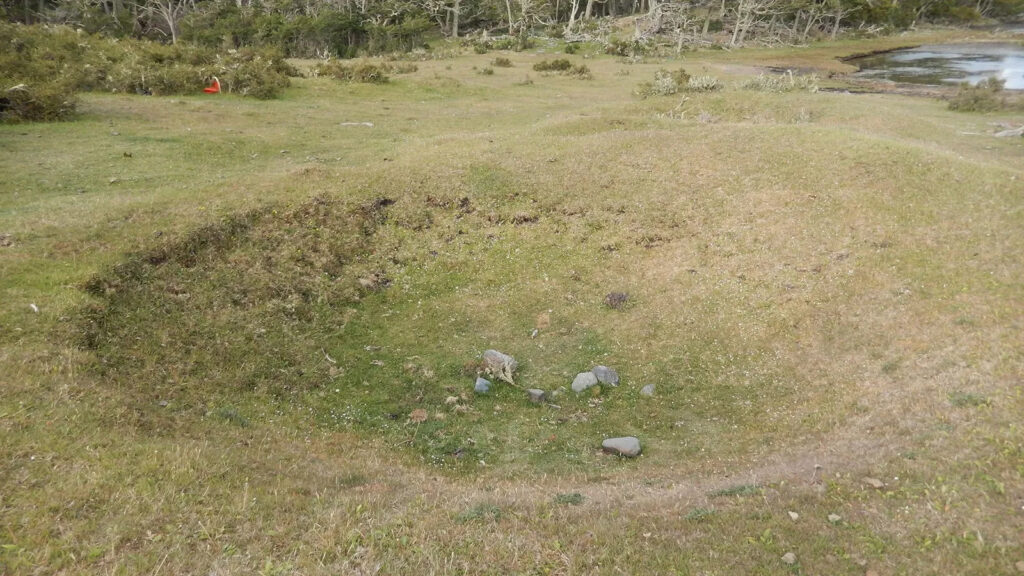
As we drove on, near-gale-force winds whipped the surface of the Beagle Channel into white peaks that resembled the mountain range on the Argentine side of the waterway. Inland lay evergreen beech forests, interspersed with scarlet-flowering Chilean fire bushes. There were also occasional patches of devastation: toppled trunks and crushed branches, stripped of their bark. It looked as if they had been hit by a natural disaster. Some bore the tell-tale char of fires set to clear land for farming and grazing, Van de Maele explained, but others had a more unexpected cause – beavers.
In a bid to develop a fur trade in the 1940s, the Argentine authorities recklessly introduced a small group of Canadian beavers to their section of Tierra del Fuego, with disastrous consequences. The industry failed to take off and, with no natural predators in the vicinity, the rodents quickly spread across the region. Now numbering around 200,000, the beavers are estimated to have damaged 25% of the forest ecosystems in Tierra del Fuego.
Nearby, Van de Maele pointed out an old military bunker facing the shoreline. It was a relic of a border dispute between Chile and Argentina over a trio of uninhabited islands – Picton, Lennox and Nueva – just east of Isla Navarino that brought the countries to the brink of war in 1978. Despite fears of an invasion, mediation by Pope John Paul II ultimately helped to resolve the dispute peacefully and the islands remain part of Chile.
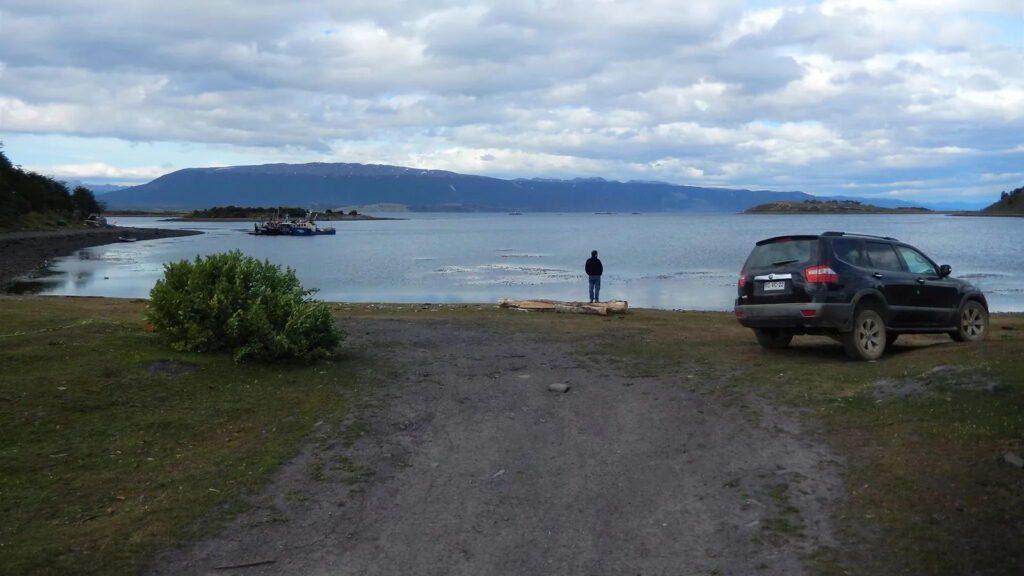
After an hour, we reached the end of the Y-905 at Caleta Eugenia. The ranch is home to just two people – a father and son – who act as caretakers for the navy, raising livestock and selling timber. As we walked along the beach, scanning the channel for cormorants and petrels, the father emerged from the rickety homestead for a chat, offering local gossip while leading a chestnut horse out to graze.
Illuminated by the late afternoon sun, Caleta Eugenia felt like a fitting place to finish my journey, but it may not remain the end of the road forever. Plans have been mooted to extend the Y-905 a further 20km or so to the tiny king crab-fishing settlement of Puerto Toro, the southernmost village on Earth and currently only reachable by boat. And perhaps it’s a mistake to think of the ranch as a finishing point at all. From a southern hemisphere perspective, it could just as easily be the start.
The Open Road is a celebration of the world’s most remarkable highways and byways, and a reminder that some of the greatest travel adventures happen via wheels.
Source : BBC

